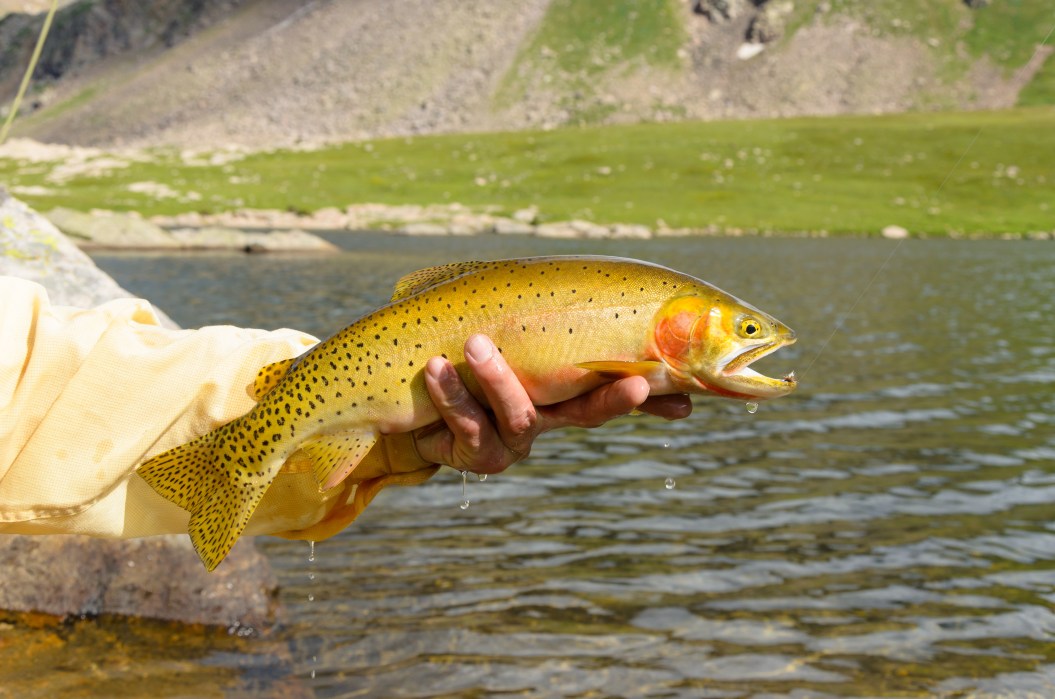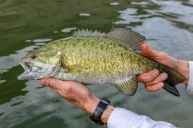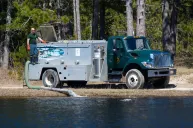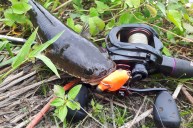Colorado's Rio Grande cutthroat trout have been in a bad way for a while, with populations hurting from invasive competitors in their rivers and lakes. In short, the native fish in desperate need for unspoiled habitat to reestablish healthy populations. Last week, Colorado Parks and Wildlife (CPW) announced a solution—albeit a drastic one: They plan to eliminate all the other fish in select waters to get rid of invasive, competing species, and then re-introduce cutthroat trout in the pristine habitats.
The plan is to sacrifice one species to save a more delicate one, Colorado Parks and Wildlife announced.
Their first place of action will be the Rito Hondo Reservoir, which was drained in 2020 as an emergency measure after there was a leak in the dam. This presented an opportunity for the state to optimize the lake for its best purpose, which they decided was to be a home for Rio Grande Cutthroat.
"The reservoir being drained for repairs gives us the opportunity to reclaim the lake itself and the stream above it without having to treat the whole lake," CPW aquatic biologist Estevan Vigil said. "The coolest thing about this project is that it's popping up out of nowhere and providing another lake that can grow really good trout."
The agency will use an organic poison to kill the lake's current population of fish and then restock the lake next year with Rio Grande Cutthroat, a struggling species of native trout. Rio Grand cutthroat trout are one of three native trout species indigenous to Colorado. While it may sound extreme, this method is common in Colorado.
Success stories of species elimination followed by Rio Grande Cutthroat reintroduction across the state include Medano Creek in the Great Sand Dunes National Park, Sand Creek, Lake Fork of the Conejos, Placer Creek, and more. According to Colorado Parks and Wildlife, there are six similar projects planned statewide this year alone.
"We anticipate this being a great conservation success," Vigil said. "We hope to establish this as a broodstock lake to get more Rio Grande cutthroat eggs for stocking out across the San Luis Valley."
Removal of other fish, such as non-native brook trout, is necessary because they compete, prey on, and hybridize with Rio Grande cutthroat trout, the CPW said.
The agency plans to treat the lake with a rotenone treatment next week, let the water remain fishless over the winter, and then stock the Rito Hondo with native Rio Grande cutthroats after the spring run-off next year.
Rotenone is an EPA-registered pesticide that comes from a tropical legume root. When used properly, it only affects gill breathing animals and invertebrates. It has long been used throughout the world for fish management projects, including by CPW and other state fish and game agencies, for more than 80 years.
Last year, the National Park Service used rotenone to remove invasive smallmouth bass and green sunfish from the Colorado River in Glen Canyon National Recreation Area. Also last year, in New Mexico, wildlife officials treated six creeks to benefit the same species, the Rio Grande cutthroat. Rotenone has also been used in Yellowstone to prepare waters for reintroduction of westslope cutthroat trout.
READ MORE: Dwindling Rivers in California Could Mean No Salmon, Smelt, or other Fish in the Future




